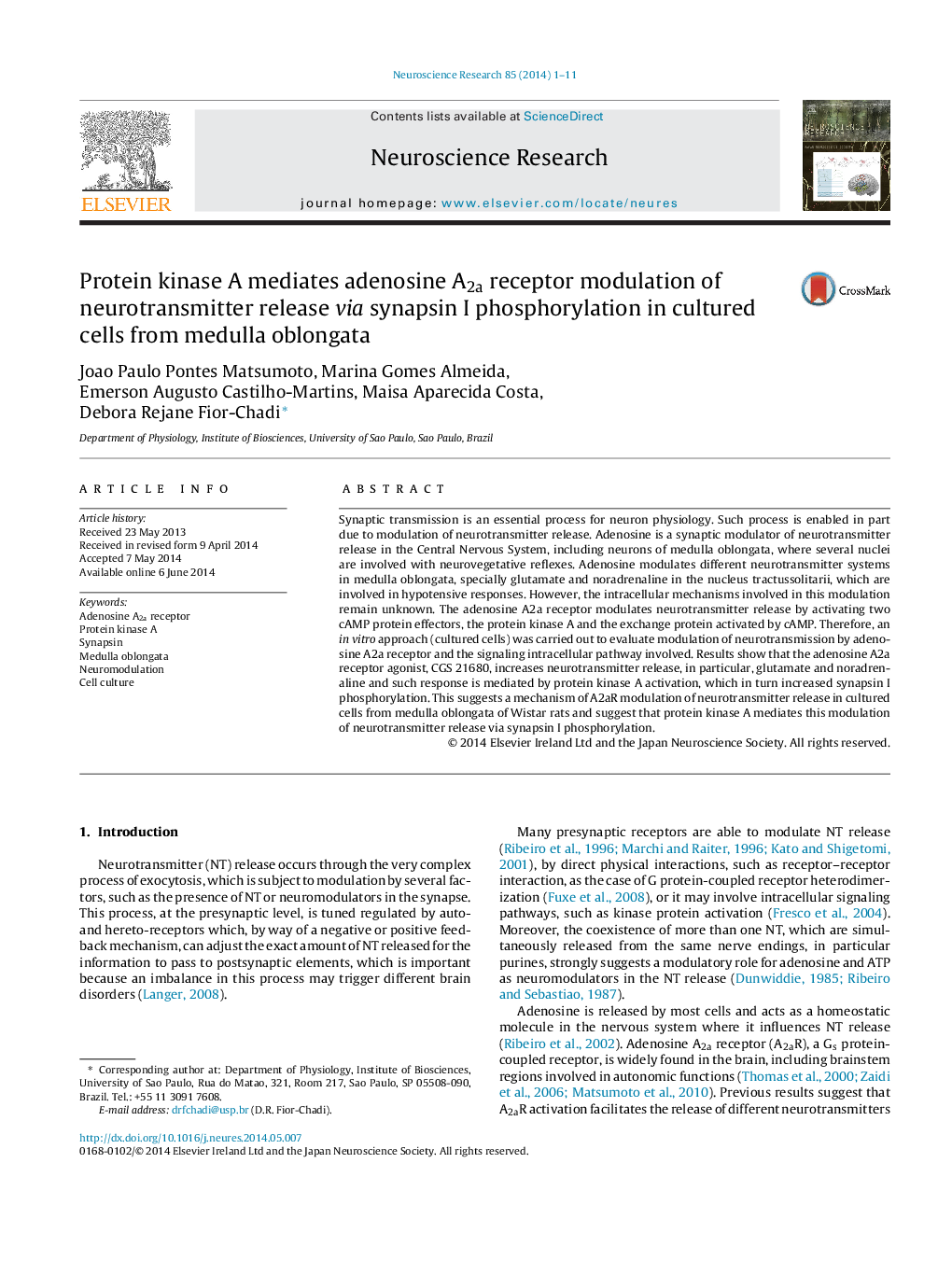| Article ID | Journal | Published Year | Pages | File Type |
|---|---|---|---|---|
| 4351396 | Neuroscience Research | 2014 | 11 Pages |
•Analysis of adenosine modulation of neurotransmitter release in primary cultured cells.•A2a receptor stimulation increases glutamate and noradrenaline.•A2aR antagonist and PKA inhibitor counteracts GLU and NA increases.•CGS21680 increased synapsin I phosphorylation via PKA activation.•PKA mediates CGS21680-induced increase in GLU and NA via synapsin I phosphorylation.
Synaptic transmission is an essential process for neuron physiology. Such process is enabled in part due to modulation of neurotransmitter release. Adenosine is a synaptic modulator of neurotransmitter release in the Central Nervous System, including neurons of medulla oblongata, where several nuclei are involved with neurovegetative reflexes. Adenosine modulates different neurotransmitter systems in medulla oblongata, specially glutamate and noradrenaline in the nucleus tractussolitarii, which are involved in hypotensive responses. However, the intracellular mechanisms involved in this modulation remain unknown. The adenosine A2a receptor modulates neurotransmitter release by activating two cAMP protein effectors, the protein kinase A and the exchange protein activated by cAMP. Therefore, an in vitro approach (cultured cells) was carried out to evaluate modulation of neurotransmission by adenosine A2a receptor and the signaling intracellular pathway involved. Results show that the adenosine A2a receptor agonist, CGS 21680, increases neurotransmitter release, in particular, glutamate and noradrenaline and such response is mediated by protein kinase A activation, which in turn increased synapsin I phosphorylation. This suggests a mechanism of A2aR modulation of neurotransmitter release in cultured cells from medulla oblongata of Wistar rats and suggest that protein kinase A mediates this modulation of neurotransmitter release via synapsin I phosphorylation.
